When I finished my workshop, I used wooden pegboard offset from the walls with 1” strapping, so it was easier to hang tools or items. It gave it a warmer feel, was easy to clean and looked more organized. I noticed it absorbed the sound in the shop too – I couldn’t hear the laundry in the next room, and no one complained about the noise of my table saw as much! That got me thinking.
Does wood absorb or reflect sound? By itself, wood reflects better than it absorbs. However, wood with holes through it has much better sound absorption. Perforated wood with an airspace behind it will effectively dampen sounds in the medium to high range and absorbing bass sounds.
Wow! Wood not only reflects sound it can absorb it too. I’d accidentally stumbled across a noise solution for my workshop. Now I wanted to know more about how wood can be used to improve the acoustics in other parts of the house. Here’s what I found.
Does Wood Absorb or Reflect Sound – Acoustic Properties of Wood
Wood reflects sound better than it absorbs. Its porous nature, however, does absorb some sound. Sound waves are different lengths for different frequencies. They travel through the air until they encounter something that disrupts their frequency of movement.
Sound Absorption
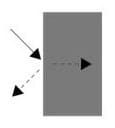 Wood isn’t a dense enough material to absorb much sound as is. However, wood with holes, grooves or slots cut into it becomes a perforated resonator that does reduce sound. Enhancing the porous nature of wood improves its sound absorption ability.
Wood isn’t a dense enough material to absorb much sound as is. However, wood with holes, grooves or slots cut into it becomes a perforated resonator that does reduce sound. Enhancing the porous nature of wood improves its sound absorption ability.
The panels work by fragmenting soundwaves. The holes or grooves let air through the wood but disrupt the sound wave passage through the wood, creating better sound resonance. Higher frequency waves are reflected and lower frequencies absorbed.
If you’re trying to improve your music listening enjoyment, losing the low frequencies may give you a flat sound. Should you be trying to reduce echo or impact noise; acoustic plywood panels are just the ticket.
Diffusion
 When some sound waves hit a smooth flat surface, they are reflected straight back. The reflected waves can overlap the original soundwave creating a disturbing echo or ringing that makes it difficult to hear sounds you want to hear clearly. Think about a church, lecture hall or theater and how sound bounces around in them.
When some sound waves hit a smooth flat surface, they are reflected straight back. The reflected waves can overlap the original soundwave creating a disturbing echo or ringing that makes it difficult to hear sounds you want to hear clearly. Think about a church, lecture hall or theater and how sound bounces around in them.
Diffusion is what happens when sound waves are reflected off a curved or irregular surface like acoustic wood panels. The soundwaves are scattered or diffused, removing the echo or flutter within a room.
Reflection
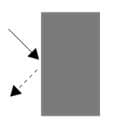 Wood planks or plywood sheets usually have a smooth solid surface which reflects sound. The sound wave is usually bounced back in the same path it traveled from, distorting the original sound or causing an echo. A solid wood plank floor creates a reflected echo of noise that can be very disturbing.
Wood planks or plywood sheets usually have a smooth solid surface which reflects sound. The sound wave is usually bounced back in the same path it traveled from, distorting the original sound or causing an echo. A solid wood plank floor creates a reflected echo of noise that can be very disturbing.
The sound reflection off a floor may be controlled using the carpet. Wooden acoustic panels or curved surface panels will diffuse the sound reflecting off walls or ceilings. Sound reflected off a curved surface, or parabola will reflect the sound on an angle to the original wave based on the curve. It’s the reflection ability and curved surface that makes wooden musical instruments sound so good.
Wood Noise Reduction Coefficient
The Noise Reduction Coefficient (NRC) is an average measure of the acoustic properties of a material. It measures how much noise the material reflects and how much it absorbs. The scale goes from 0 to 1; 1 being all sound is absorbed or reflected, and 0 meaning no sound is absorbed or reflected.
Smooth wood surfaces will naturally reflect with an NRC of 0.05 to 0.15 depending on the reflective quality of the wood. Plywood with a thickness of 13/32” (10mm) has a sound absorption NRC value of 0.23. Acoustic wooden panels can improve the absorption to a value between 0.65 and 0.90 when correctly placed under the direction of a qualified sound engineer.
Sound-Absorbing Products Made with Wood
Acoustic plywood panels can have round or oblong holes, or both cut through them. Other wood panels may have slots or grooves cut part way through horizontally on one side and vertically on the other, with openings where the grooves intersect. Or, they can be made of a latticework of slats that looks similar to the grooved panels.
The panels can also be flat, curved or concave/convex depending on their design purpose. Wood panels will add a natural warmth and charm to any room. Great for a home theater, play room, home recording studio, exercise room, or even the workshop! They can even have a flame retardant finish.
Perforated Wood Acoustic Panels
Wood or wood product panels are perforated with holes through them or with dents part way through. The dents or holes centralize and absorb sound waves. They reduce noise levels and sound reverberation within a room or building. The panels can be hung on walls or suspended from the ceiling. With NRC values between 0.25 and 0.80 depending on the hole diameter, pattern and installation they are an effective noise solution.
Slotted Panels
Slotted wood panels can be used on walls or ceilings to reduce the noise and echo within a room or building. The length and pattern of the slots cut through the panels influence their absorption of soundwaves. The Noise Reduction Coefficient ranges between 0.40 and 0.75, depending on the slot pattern and installation.
Grilles
Acoustic wood grills are also known as a grid or slatted panels and are used on walls and ceilings to reduce sound transfer and echo. The spacing between the wood pieces making up the grill influences their effectiveness at reducing different frequencies of sound. The NRC varies from 0.20 to 0.70 with the grill depth, material, and installation; they are better for larger rooms.
Decorative Acoustic Panels Made With Wood
Acoustic wood panels are a warm, decorative and aesthetically pleasing way to improve the acoustic conditioning of a room or building. The thickness of the wood and its density are key factors to how well it absorbs sound. It has NRC ratings from 0.70 without added acoustic insulation, to 0.95 with it.
Wood panels with a more porous structure are being manufactured from recycled material to improve sound absorption. Combined with precision cut grooves, holes, and slats or slots, acoustic wood panels provide greater sound absorption than ever before for walls and ceilings. The wood panels are available in flat, curved, plank or large sheet formats to maximize their use within your home or business.
For more information on room acoustics, please see our articles, How to Sound Treat a Room and How to Soundproof a Home Theater.
Acoustic Diffusion Panels
Wooden acoustic diffusion panels are a decorative and warm way to manage the echo and feedback in your living room, home theater, music room, or home studio. They open a room up and widen the listening enjoyment area by reducing or removing bounce-back sound waves and flutter echo without altering the sound you are listening to or for. The diffusion panels can make a small room seem bigger, and a big room seem smaller.
An example is the wooden 2-foot square ATS Sound Diffuser panel. They’re easy to hang on any wall and the 7 pockets or wells are designed to diffuse sound waves in the 325Hz to 3kHz spectrum. Designed to remove the echo and flutter, they can be arranged in any room to improve sound and listening quality. Available in unfinished wood, they can be stained or finished to enhance any decor.
Decorative Acoustic Wall Panels
Acoustic wall panels are available in a variety of materials, including wood, metal or synthetic materials. Depending on their composition, they are engineered to absorb sound and reduce sound transfer into other rooms and feedback within a room.  Available in different sizes and mediums, their decorative aspect helps them blend with their surroundings and improve the sound quality.
Available in different sizes and mediums, their decorative aspect helps them blend with their surroundings and improve the sound quality.
Acoustic Pictures
Acoustic pictures are full-color graphics on acoustically transparent fabric, stretched over quality acoustic wall panels. The acoustic panels reduce the echo and reverberation and have NRC sound absorption ratings up to 1.0. The graphics can be from licensed works or printed from your own photo collection. Great for enhancing the acoustic and visual ambience of a room.
Great for enhancing the acoustic and visual ambience of a room.
Acoustic Timber Panels
Acoustic timber panels provide real wood warmth and control the acoustic ambiance of a room or building. The panels are made of wood planks with spaces between to reduce the echo and reverberation within rooms or buildings. They can be used on walls or ceilings to reduce noise and noise transfer. The spacing of the planks in the panels is engineered to optimize the noise reduction factors and provide a solution for your sound problem.
Timber Acoustic Fencing for Noise Reduction
Acoustic timber fencing is designed to reduce noise from roadways or venues by as much as 32dB. The fence allows no gaps for sound waves to travel through unimpeded; even with seasonal expansion and contraction. The timber acoustic fence reflects the noise back the direction it came, and only diffracted noise goes over the top. The height and thickness of the fence are factors in its soundproofing effectiveness.
DIY Wood Acoustic Panels
As a DIYer, I believe that anything someone else can make out of wood, I can too. Acoustic wood panels are something a DYIer can make; it’s the math that might be the problem. However, with the help of the internet, it’s possible to find plans with the math already worked out. Some plans are free; others have a marginal cost. Building it yourself is usually cheaper too.
The biggest decision is whether to make something that absorbs, diffuses, or reflects noise. That depends on what you need it for. If you want to reduce the echo, reverberation, or noise transfer, then you may want to build some sound absorbing panels. To break up low, mid, and high frequencies, make yourself some sound diffusers. The easiest to make is the reflective panel with a smooth solid surface – add some steam and weight you can even make curved or concave/convex panels.
A word of caution though – always check your sources and the simple math. 300mm is 30cm which is 11.8-inches, or almost a foot…not 9-inches as I saw in one site.
Related Questions:
What’s the best wood for room acoustics? Most woods can be used to improve the acoustics of a room, but the best wood is a soft wood like pine or alder. It is easy to work with, low cost, but produces a warm natural well balanced tonal sound, which is why most major studios use it.
What is the best wood for a recording studio? The best wood for a recording studio is pine. It produces a warm natural sound and can be used on floors, walls, and ceilings. It is a natural element, so sound striking it sounds more natural to our ear. Pine is inexpensive, creates a warm visual effect, and is used in many recording studios.
Related posts:
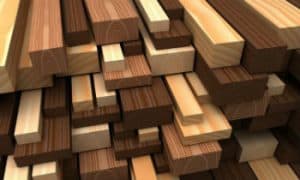
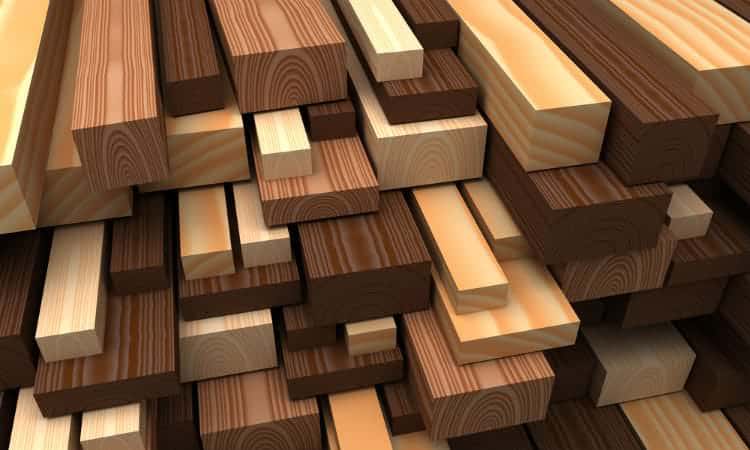
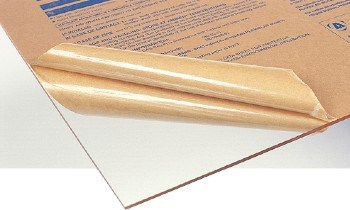
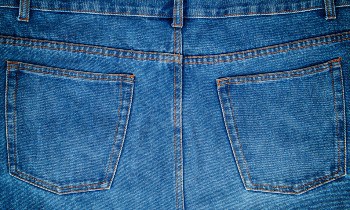
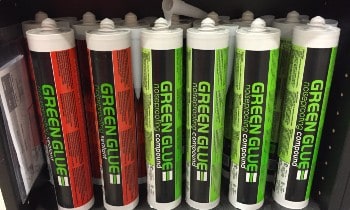

Did you measure the db before and after you put up the peg board? I want to believe this works, but please save me the effort, if you have some data it would be very helpful. Thank you
I’m making a home studio and have installed wood panels on the front wall. The wood is actually reclaimed wood siding that I installed reversed on the wall (the other side has the old peeling house paint). I believe the wood is redwood siding from @1960. I live in Texas.
I plan to used the studio as a combo recording and mixing room and will be installing other acoustic panels and bass traps also. As for recording, most of the open mic recording will be vocals and acoustic instruments.
So my question is this… should I leave the wood siding natural? And… Will it’s absorption be diminished or reflection be increased if I put a clear satin varnish on it?
Hi Dave,
I think that the varnish would diminish absorption because it will seal the wood cells. I am an oil finish fan–like Danish or Swedish Oil. Because it is absorbed into the wood, I think it would not increase reflection. Also, oil is simple. Keep the wood wet for about 20 minutes, then wipe it off. Done.
Hope that helps,
Terry
I’m hoping to improve hearing ability in our Senior Living Community Center. We have no upholstered furniture, no drapes and lots of windows. Lots of vinyl tables with cloth covered chairs. We want to leave windows without drapes. What type of wood panels should we buy to cover with heavy fabric? Or what other panels or recommendations?
Hi Wretha,
You are not making this easy. You might want to take a look at our article How to Sound Treat a Room. Although it was written with recording in mind, many of the recommendations could work for your situation–like acoustic panels, and sound diffusers, and bass traps. None of it is terribly expensive, and the panels come in multiple shapes, sizes, and colors so hanging them in various locations will absorb and diffuse sound, cut down echoes, and absorb bass. You only need to cover about 30% of the wall area to achieve an appreciable improvement.
Hope that helps,
Terry
Hi
tnx for the useful article!
I’m planning on hanging 2 sheets of 1/2 birch plywood curved with a decorative pattern with CNC but only 1/8 deep and not all the way through. Will it reduce echo in my living room? I don’t need heavy-duty diffuser but I want to know if it works as I imagine and if there are ways to improve it?
Hi Hagai,
Should cut down echo and standing waves because of the design. I don’t know if it will be enough for you, but you can possibly add something else later, if necessary.
Terry
Thanks for the great article.
I’m designing a baffle box to reduce the noise of a gas generator, and planning on lining the inner surfaces with homemade perforated acoustic plywood. Are there any resources on how to design the perforations for optimal absorption? (spacing, depth, etc) In this project, the lower frequencies would be a priority. Thanks for any help.
Conor
My bedroom window opens into a busy road. At time it’s busy and noisy
Can I add additional wooden / plywood window to block the road noise and make my bedroom quiet ?
Pls provide some tips
Hi Manoj,
Sounds like you want a window plug. Please see our article How to DIY Soundproof Window Plug for ideas how to build something that is very soundproof and removable.
Terry
Dave,
The information you’ve provided here is the best I’ve come across. I live in a multi family house and am concerned about my neighbor hearing me in my office. I can hear my neighbor’s dog barking from time to time and figured I can probably be heard as well.
I’ve been looking for solutions and think you’ve provided one: stretched fabric on the wall.
Thanks for the information.
JEFF
Thanks for an informative and helpful article!
Hi,
Good to hear it was helpful.
Terry
Hello Terry,
I am making a small sized model rain diorama. Approximately 8′ long by 1′ wide. I want to lessen the sound of the metal wheels on the nickel silver track. I am using modern model engines which are pretty quiet and I am thinking of using Homasote or Micore as an underlay and a choice of cork, camper tape or foam tape as a roadbed. is this adequate for HO scale rolling models or do I need to add some ATS wall panels or similar ? Many thanks.
“train” not rain. Sorry about that